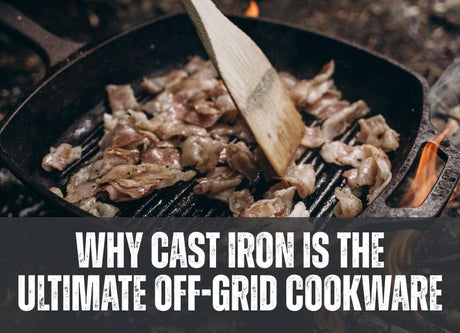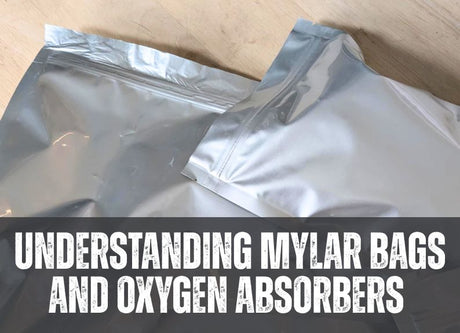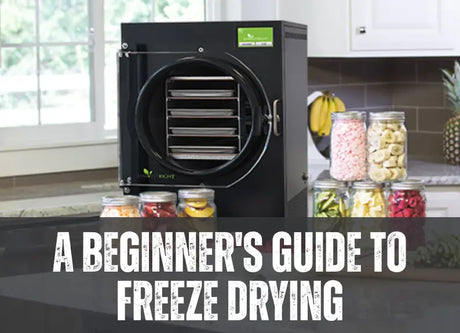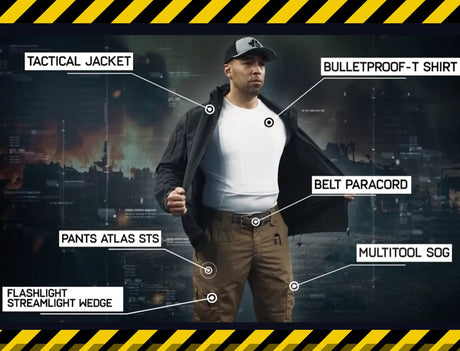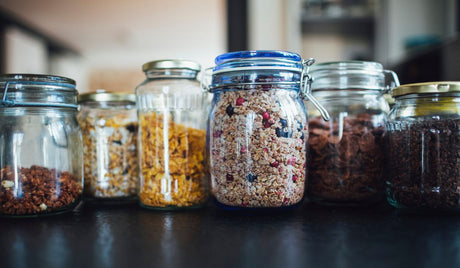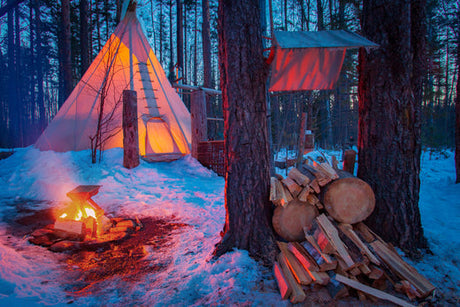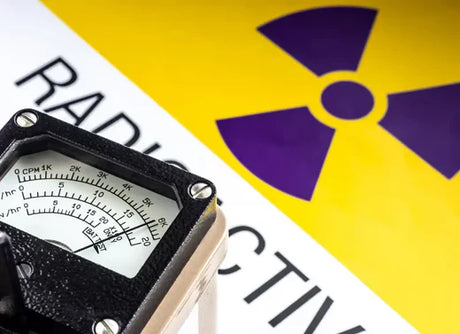In a fragile supply chain, one of the most liberating things you can do is learn to sustain yourself through any season. In colder climates, like Canada, growing seasons are short and limited. During the lean and long winter season in the Northern hemisphere, how do humans sustain themselves with proper nutrition and the energy they need to survive? In Northern Saskatchewan, building a passive solar greenhouse can keep you and your family fed through the long winter months. In this blog, we’re going to tell you how to build and maintain a passive solar greenhouse.
Are you ready to take your homesteading to the next level?
Mastering homesteading techniques is a critical part of your bug-out plan; not only do homesteading techniques like canning, farming, and preserving food help you thrive, they are also crucial for survival in extreme climates. In the northern hemisphere, the winter is long and dangerous; food is sparse and the conditions are extremely difficult. When planning your bug-out location, many survivalists begin learning how to survive off the available resources in order to be ready for post-collapse. This can include many strategies, such as:
- Defence
- Preserving food
- Sewing and making thread or wool yarn
- Animal husbandry
- Building up food and defence stores
For those of us with short growing seasons, having a way to grow through the seasons while remaining off-grid is a goal. In this blog, we’re going to talk about how to build a four-season greenhouse using only passive solar heating.
The benefits of passive solar heating in Canadian winters

For many, an apocalypse scenario involves nomadic living among an urban or rural landscape scavenging for food and living in fear. However, for many, that rogue lifestyle with result in death from exposure and malnourishment. When it routinely gets to -30°C/-22°F staying warm and getting food is an intense challenge that many people fail. However, the sun is our greatest source of energy and can be harnessed to provide warmth and nourishment even in the most extreme conditions.
-
Passive solar heating is completely off-grid
As opposed to active solar energy or other forms of energy such as natural gas or electricity, passive solar heating is where materials are placed strategically in their environment to optimize the sun. This means you can build structures that heat water, keep you warm, and more just by building in a way that suits your location.
-
You can build an all-season greenhouse to grow food
Even in an extreme climate, a passive solar system can be used to grow food throughout the winter. This means that you and your family can access fresh produce and stay healthy even in the most treacherous and inhospitable winter climates on earth.
-
Minimize your carbon footprint
By being strategic about materials, you can use science to help you minimize your footprint and keep your cost of living low. In a world where the price of feeding and sustaining your family is growing more and more expensive, growing your own food can offset those costs; passive solar technology can also offset the cost of your heating and cooling expenses.
How to build a solar greenhouse in Northern Canada

Passive solar energy relies on certain known principles of energy such as thermal mass, indirect gain, and thermal radiation. These principles were largely harnessed by architects in the early 20th century as ways of heating homes when there were fuel shortages during the world war. Since that time, a lot of work has gone into developing materials and strategies that can store and transfer heat for homes, businesses, and greenhouses.
-
Thermal mass
This refers to the material which collects, stores and off-puts thermal energy. These materials are made from concrete, stone, water, and more. In fact, water is actually the most efficient thermal mass, as it absorbs and releases the most heat. In a greenhouse, a thermal mass can be barrels of stored rainwater or a concrete floor. There are a number of options depending on the materials you have available to you. Concrete is another popular option, painted black to attract the maximum amount of energy.
To build a thermal mass, there needs to be a wall of glass positioned to best capture solar energy in your area where light can penetrate thermal mass walls and flooring.
-
Protection from the elements
One important part of building passive solar homes and greenhouses in a cold climate is that you need to dig into the ground to add insulation and frost protection. In some places, the frost layer is as deep as 1.8m (6ft). Digging down at least 1.2m (4ft) will keep your building insulated as well as preserve the temperature for longer periods of time.
These sunken-style greenhouses, also called Walpini greenhouses, are constructed to maximize the available solar energy as well as prevent heat loss through exposure to the environment. Walpini style greenhouses are able to subsist solely off of passive solar energy alone, even in sub-arctic temperatures of northern Canada.
-
Location of the sun
Calculating the sun’s height during the summer and winter months will help you to properly position your windows to allow maximum sunlight to hit your thermal mass in the winter, while in the summer, only the early and late sun will enter. In the summer months, those same materials that keep and release heat now provide natural cooling.
To measure the angle of the sun in the winter or summer seasons, you’ll need to take your measurements on summer and winter solstice. This will help you find the most accurate angle of the sun for the season. To measure the height of the sun, your need to use some basic trigonometry, but done stress, it’s easier than you think. Using the equation (b/a) you will calculate the tangent of the angle which can be used to determine the ideal height and angle of your home or greenhouse.
Use a vertical pole staked in the ground, measure its height; this measurement is the ‘b’ in your equation. At noon on or near the solstice, measure the length of the shadow produced by the pole and the sun; this measurement is your ‘a.’ The result is the TANGENT that you can use to determine the highest angle of the sun during the two seasons.
-
Your location
If you’re in the northern hemisphere, you will want to orient your windows southward, and the opposite is true in the southern hemisphere. Orient your home within 30°s of TRUE SOUTH or NORTH, not magnetic south or north. It is valuable to privilege the morning sun over the afternoon sun to prevent overheating in the summer.
-
Windows
While glass can be used, polycarbonate is a more suitable material to make the most of your local winter light. Where glass reflects light, polycarbonate refracts it making growing conditions in your greenhouse far more efficient. In addition, polycarbonate is also stronger, lighter, and easier to install than glass––making it a far more efficient building material, especially for off-grid applications.
Polycarbonate is impact-resistant, flame-retardant, and can easily be cut to size using accessible tools. This thermoplastic sheet is durable and ideal for greenhouses and custom off-grid builds.
-
Insulation
Having a well-insulated space is an integral part of successful passive solar energy. Choosing thicker walls made from concrete or that are densely insulated will contain both hot and cold temperatures when required.
Some alternative insulation materials include wool, hemp, hay, thermacork, and more.
-
Snow and wind

In Northern climates, snow and wind are major concerns for any building structure. Much of western Canada is in an active tornado belt and it is normal to get wind gusts up to 100km/60m during inclement weather. When building your greenhouse, it is important to consider the environment and the common weather conditions for your area so that you can eliminate potential hazards and build a structure that is long-lasting.
A pitched roof will not only maximize the winter sun but can also prevent snow build-up from becoming dangerous. It can also prove to be aerodynamic if built to consider the weather patterns in your area.
-
Raised garden beds
Having raised garden beds is another great way to prevent frost damage if you don’t have a concrete floor installed. It is cost-effective to have a dirt floor, and many people choose to go that route. In either case, raised beds are an effective deterrent against potential frost damage and the cold.
Utilizing the ground material of your local area is an efficient way to maximize your build and reduce costs. All materials like clay, shale, and soil provide a thermal mass that can keep heat in your greenhouse over the long winter.
Winter crops that will thrive in a solar greenhouse
In a winter greenhouse, some crops will be more appropriate than others. While passive solar heat can make temperatures feel summery, it is prudent to plant cold-hearty crops. Summer crops (such as berries, cucumbers, grains, and herbs) can be preserved to last the winter through canning, freeze-drying, fermenting, and pickling –– which you can learn more about on our blogs, How to preserve your own food for emergency stockpiling and Food Preservation Basics: A Prepper’s Guide.

Winter crops are crops that are resilient and hearty through cooler temperatures. These crops are largely vegetables and leafy greens. When you use passive solar heat, you will be able to also grow crops that are able to grow in shade, such as beans, squash, and herbs.
Winter crops for your walpini greenhouse:
- Carrots
- Winter Lettuce
- Beets
- Scallions
- Leeks
- Kale
- Corn mache
- Potatoes
Generate income from your passive solar greenhouse
Ahead of the apocalypse, you can generate income from your greenhouse by selling produce. In addition, you can produce fauna for your local market through plant propagation and flower crops that can easily be converted into food-growing areas when needed.
With excess crops that can’t be eaten right away, freeze-drying is an excellent way to both save food for yourself and generate income for your family. If you’re able to invest in a high-quality freeze-dryer, then you can package those goods for local farmer’s markets.
Successful passive solar farming requires failure.
Building a passive solar greenhouse takes planning, and the crops you can grow in your area and hardiness zone will be an experiment. If you’re a prepper looking to take your skills to the next level, don’t delay. It can take years of experimentation to learn the ins and outs of your greenhouse, gardening, and building the health of your soil.

Homesteading is the key to thriving in a post-apocolyptic setting. Learning how to successfully maintain a symbiotic relationship with your homestead, from livestock to growing seasons is a critical skill that takes time to learn. If you’re interested in building out an off grid-homestead, now is the time to start.

Want to learn more? Watch our interview and greenhouse tour with Dean from Arkopia Freeze-dried foods and subscribe to his youtube channel for all your self-sufficient homestead needs.



